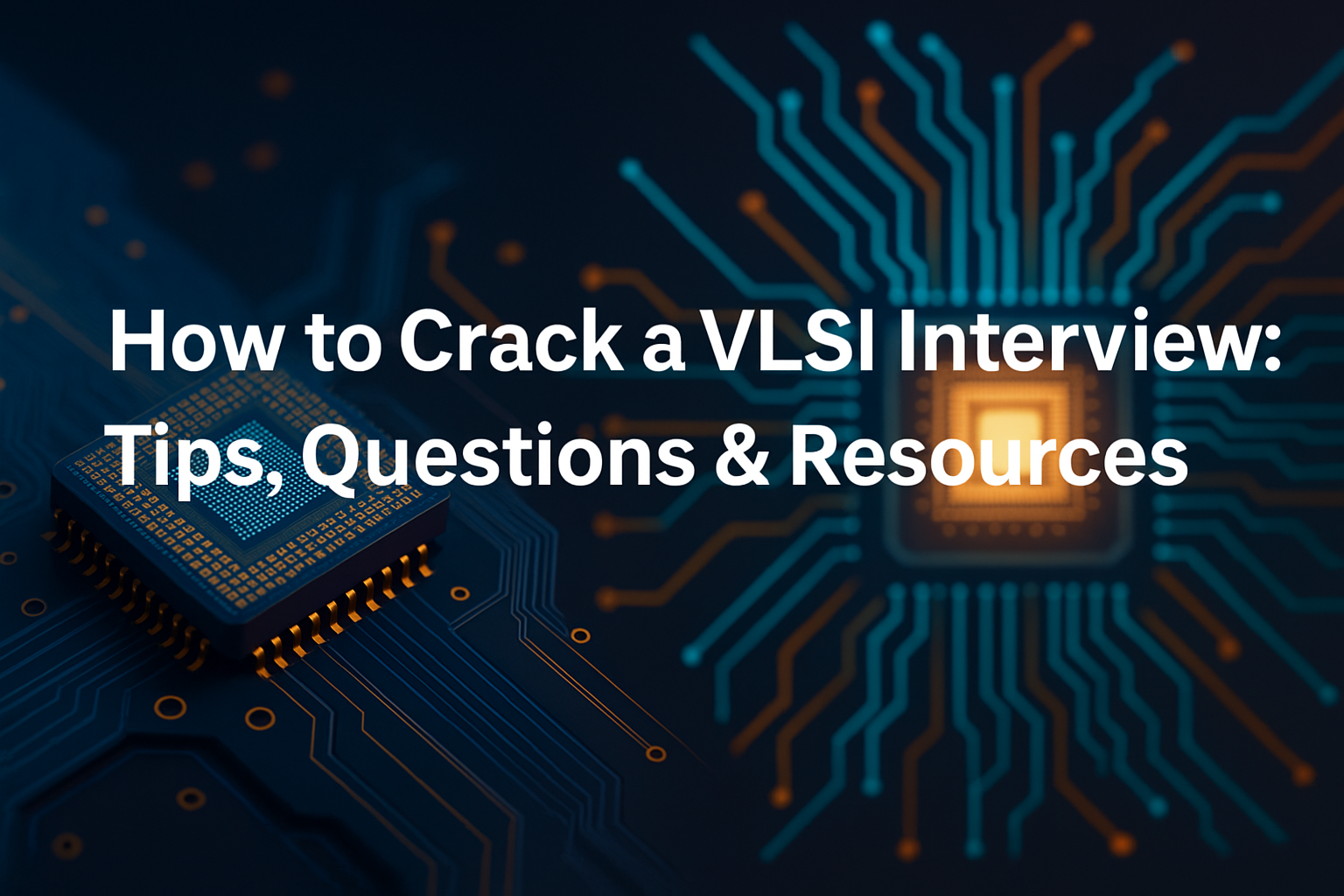How to Crack a VLSI Interview : Tips, Questions & Resources
Breaking into the VLSI (Very-Large-Scale Integration) industry can be a game-changer for any electronics or ECE graduate. With semiconductor demand soaring and India investing heavily in chip design, the VLSI job market is ripe with opportunities. But to secure your spot, cracking the interview is the real deal.
Whether you’re a fresher or a junior engineer aiming for a top chip company, this guide will walk you through essential tips, frequently asked questions, and trusted resources that can help you ace your VLSI interview confidently.
Why VLSI Interview is Tough but Worth It
VLSI interviews are technical, detailed, and often involve rigorous problem-solving. The process may include:
- Technical written tests
- RTL or layout coding rounds
- Design debugging
- In-person panel interviews
The silver lining? A successful crack can land you in companies like Intel, AMD, Qualcomm, or cutting-edge start-ups working on RISC-V, AI, or 5G silicon.
Step-by-Step Strategy to Crack a VLSI Interview
1. Master the Core Concepts
Before anything else, brush up on:
- Digital Electronics
- CMOS Theory
- Timing Analysis
- RTL Design (Verilog/VHDL)
- ASIC/FPGA Flow
- Synthesis, STA, Floorplanning & DRC/LVS
If you’re aiming for physical design roles, focus on topics like Clock Tree Synthesis (CTS), congestion handling, IR drop analysis, and place & route.
2. Code Like a Pro
You’ll be asked to write Verilog modules or debug RTL code. Practice problems like:
- Design a D Flip Flop
- Write a synchronous FIFO
- Debug why an FSM is stuck in a certain state
A great way to prepare is to join hands-on mentorship programs like this 11-Month VLSI Mastery Course which focuses on real industry-level projects.
3. Brush Up On Aptitude & Problem Solving
Top companies still use GATE-level questions to test your basics. Practice:
- Logical reasoning
- Basic math
- Timing diagrams and waveform analysis
Frequently Asked Questions in VLSI Interviews
Here’s a curated list of real interview questions:
| Domain | Sample Questions |
|---|---|
| Digital Design | What is setup and hold time? What happens during metastability? |
| CMOS | Explain the operation of a CMOS inverter. What is the effect of channel length modulation? |
| Verilog/VHDL | What’s the difference between blocking and non-blocking assignments? |
| Physical Design | Explain the flow from RTL to GDSII. What is antenna violation? |
| DFT | How do you generate scan chains? What’s the use of JTAG? |
| STA | What is slack? How do you fix timing violations? |
Tip: Be ready to whiteboard your answers and explain your thought process clearly.
Must-Use Resources for VLSI Interview Prep
Free Resources
- EDA Playground – for online Verilog practice
- VLSI YouTube Channels: VLSI Academy, VSD, ChipEdge
- GateOverflow for problem-solving and concept clarity
Paid/Structured Learning
- ChipXpert’s Master Mentorship – Project-based, industry-aligned training
- NPTEL Digital Design or CMOS courses
Books That Help
- “CMOS VLSI Design” by Weste and Harris
- “Digital Design” by Morris Mano
- “Static Timing Analysis” by Prasad Raghunathan
Pro Tips to Shine in the Interview
- Be Honest: If you don’t know something, say so and explain how you’d approach learning it.
- Show Curiosity: Ask intelligent questions about the company’s design flow, tools, or technologies.
- Talk Projects: Showcase academic, internship, or personal projects that align with VLSI.
- Practice Behavioral Questions: Soft skills matter! Be prepared for “Why VLSI?”, “Tell me about a time you failed”, etc.
- Stay Updated: Subscribe to VLSI news or industry sites like Semiconductor Digest to keep up with tech trends.
Summary
Cracking a VLSI interview isn’t just about mugging up theory. It’s about aligning your skills, your mindset, and your preparation strategy with industry needs.
With consistent learning, hands-on practice, and the right mentorship, you can confidently step into the exciting world of chip design.
🔗 Ready to start your VLSI journey? Explore this top-rated mentorship program to make your career breakthrough smoother and smarter.


